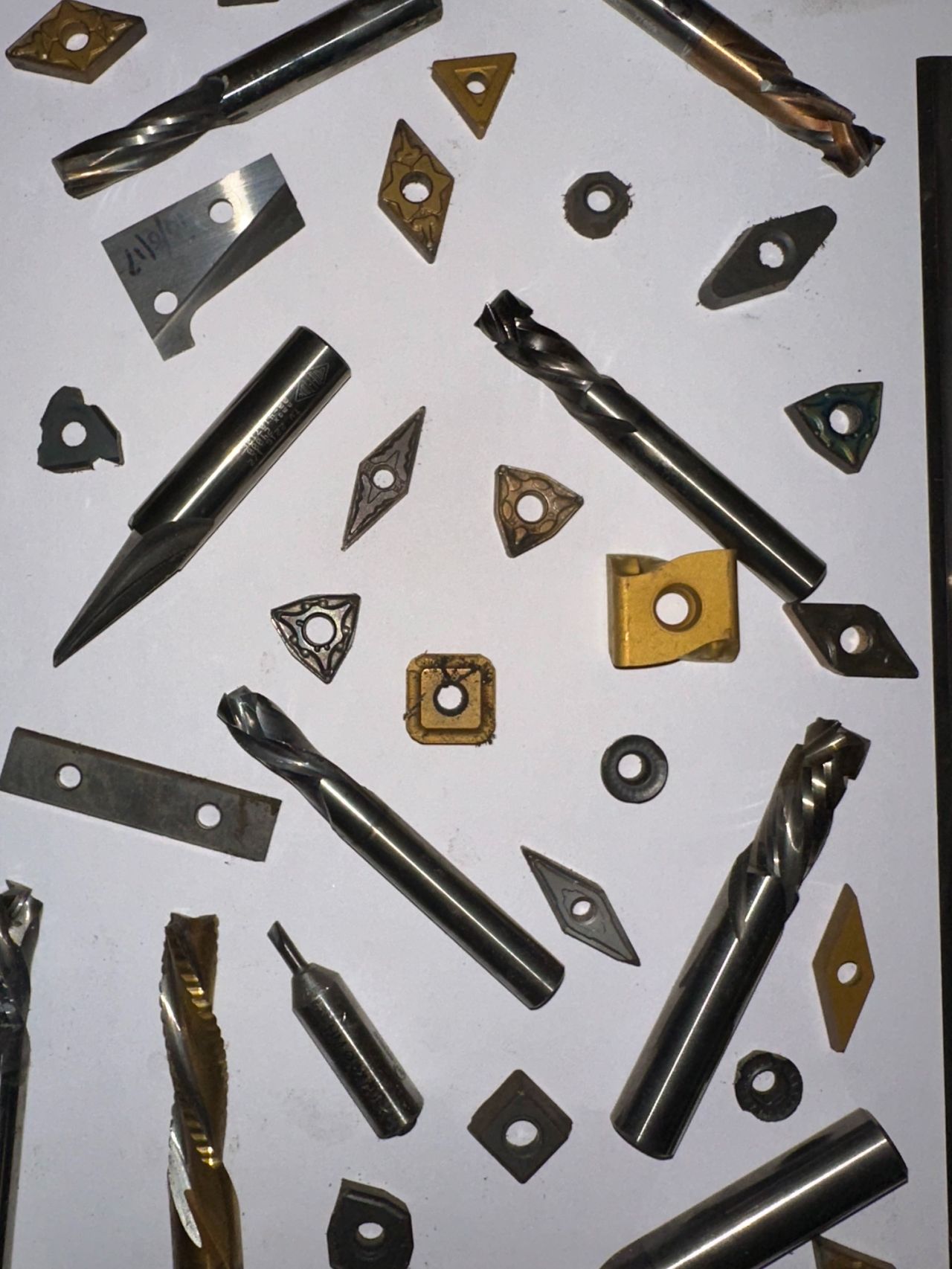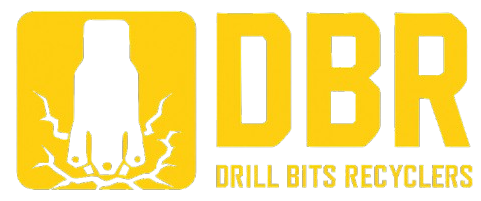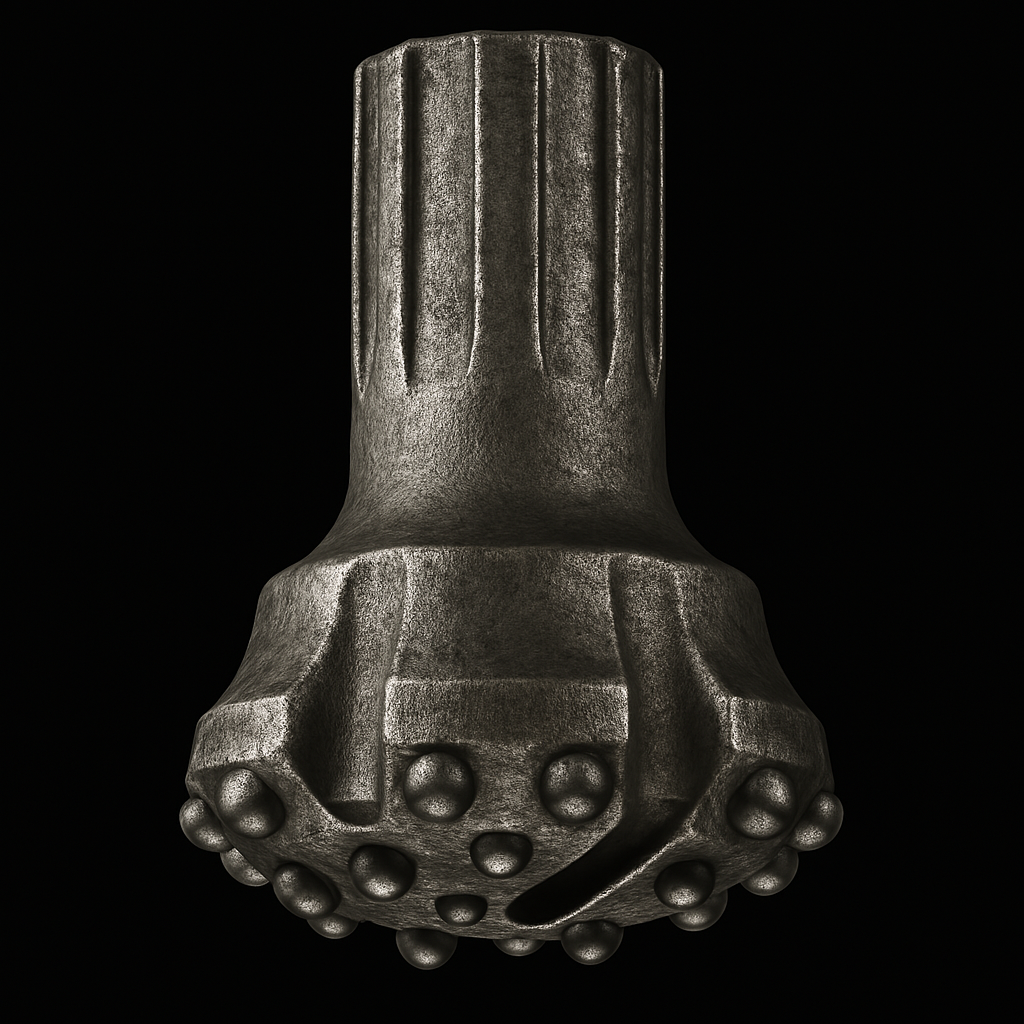Carbide Insert Archaeology: Reading the Stories in Worn Tooling
What your old cutting tools reveal about operations
The Stories Hidden in Carbide Inserts
Every used carbide insert tells a story, not just of the material it cut through, but of the machine that powered it, the operator behind the controls, and the site conditions it endured. For mining and drilling operations across Western Australia, these tiny tungsten tools become miniature records of wear, pressure, and performance, like archaeological fragments buried in the bins behind the shed.
But here’s the thing: worn carbide inserts don’t just hold lessons. They hold real value.
Whether it’s a dull cutting edge or a fractured corner, used inserts offer two major takeaways. First, they provide clues about how well your tools, equipment, and feeds are performing. Second, and more immediately, they’re packed with high-value metals that fetch strong returns in the scrap market.
If you’ve ever wondered “Are carbide inserts worth money?” or “How do I recycle these properly?”, this guide is for you.
We’ll explore what makes these inserts so valuable, how to decode their wear patterns for operational insights, and how to get the best possible price through professional carbide scrap recycling.
Let’s dig into what your old tooling is really telling you, and how to turn those stories into cash.
What Are Carbide Inserts and Why Are They Valuable?
The Composition of Carbide Inserts (Tungsten, Cobalt, etc.)
Carbide inserts might be small, but their makeup is anything but ordinary. Most are made from tungsten carbide, a compound that combines tungsten (one of the hardest elements on Earth) with a binder metal like cobalt. The result is an extremely hard, wear-resistant material capable of cutting through rock, metal, and tough industrial composites.
This combination of tungsten and cobalt gives carbide inserts their cutting power, durability, and, crucially, their scrap value. These metals aren’t just industrial workhorses; they’re also highly sought-after commodities in global markets.
So when you’re staring at a pile of dull or damaged inserts, you’re not looking at waste, you’re holding high-grade, recyclable metal.
Why Carbide Tooling Commands High Scrap Value
Used carbide inserts retain their core metal content, which remains valuable even after extensive wear. Tungsten, in particular, has a strong and stable global price, driven by demand from industries like defence, aerospace, electronics, and tooling.
Compared to general scrap metal, the price of scrap carbide inserts is significantly higher per kilo. That’s why professional recyclers like DBR prioritise carbide scrap recycling as a core service, it consistently delivers strong returns for clients who know what they’re holding.
This value only increases when inserts are sorted properly, tested for purity, and handled through expert channels.
Industries That Rely on Carbide Cutting Tools
Carbide inserts are everywhere in mining, drilling, oil and gas, construction, and manufacturing. Any industry that demands high-performance cutting or drilling tools likely uses tungsten carbide in some form.
In Western Australia, they’re most common in:
- DTH and RC drilling rigs
- Tricone and PDC drill bits
- Boring tools and lathe inserts
- Wear parts on earthmoving and crushing equipment
Because they’re used in such abrasive environments, these inserts wear out fast, creating a constant supply of scrap that’s both recyclable and valuable.
Reading the Wear Patterns – What Your Inserts Reveal
Your used carbide inserts aren’t just scrap, they’re diagnostic tools in disguise. The way an insert wears, chips, or breaks can offer detailed clues about your drilling setup, feed rates, tooling choices, and even the geology you’re working in. Think of each insert as a report card, and once you learn to read it, you can improve both performance and profit.
Signs of Heat, Stress, and Improper Speeds or Feeds
Discolouration, glazing, or even a bluish tint on your carbide inserts often points to excessive heat, usually caused by high-speed cutting without adequate coolant or lubrication. This type of thermal wear reduces insert lifespan, and may signal that your speeds and feeds are out of spec for the material or tool being used.
Other signs, like crater wear or microcracking, suggest stress overload, where inserts are pushed too hard or used on unsuitable materials. These markers can help you adjust parameters before damage spreads to the toolholder or machine.
What Broken Edges or Chipping Say About Equipment Performance
Chipping at the edges, especially on the rake face, can be a sign of mechanical shock, often caused by vibration, poor clamping, or incorrect entry angles. Repeated insert failure like this could indicate that your tooling isn’t matched to the geology or task at hand.
Fractured or snapped inserts? That’s a red flag. It could point to alignment issues, worn-out tool holders, or even drilling at the wrong angle, all of which reduce operational efficiency and increase tooling costs.
Using Worn Inserts as a Diagnostic Tool for Operations
Instead of tossing them straight in the scrap bin, take a few minutes to review your used inserts. By spotting consistent wear patterns, you can:
- Identify machine misalignments
- Optimise cutting speeds and feeds
- Detect poor coolant application
- Adjust tooling strategies for different rock formations
And here’s the upside: even if the inserts are worn beyond use, they still hold significant carbide scrap value. So you’re not just learning from them, you’re getting paid, too.
The Recycling Value of Carbide Inserts
Most mining and drilling teams know their inserts wear out fast. But fewer realise just how valuable those used inserts still are. With the right approach, your scrap bin could be holding thousands of dollars in recyclable carbide, especially when you know what it’s worth and who to sell it to.
How Much Are Scrap Carbide Inserts Worth?
The carbide scrap value depends on a few key factors:
- Purity of the tungsten content
- Condition of the inserts (clean vs. contaminated)
- Global commodity prices for tungsten and cobalt
- Whether you’re selling through a specialist or a general scrap yard
Keep in mind that dirty, mixed, or oil-covered inserts often get downgraded in value, which is why proper sorting pays off.
Current Prices for Tungsten Carbide Scrap
Tungsten is a high-demand metal, and its market price remains consistently strong due to limited global supply and growing industrial use. As of the latest trade figures:
- The price of scrap carbide inserts fluctuates in line with tungsten market trends
- Export-grade tungsten scrap often commands a premium, especially when purity and traceability are documented
- Buyers favour clean, unmixed insert batches, especially from mining applications
For up-to-date pricing, professional recyclers like Drill Bits Recyclers can provide live market-aligned quotes based on material quality and volume.
Why Recycling Carbide Is More Profitable Than Discarding
Throwing away used inserts is like binning small bags of cash.
By choosing carbide scrap recycling, you’re not just keeping valuable metals out of landfill, you’re recovering real revenue and supporting your ESG goals at the same time.
Recycling offers:
- Instant returns for materials you already own
- Lower operating costs by offsetting new tooling expenses
- Reduced waste and a lighter environmental footprint
And with expert recyclers handling the process, it’s faster and easier than most teams expect.
The Carbide Scrap Recycling Process
Getting the most from your used inserts doesn’t just come down to price, it’s also about process. A proper carbide scrap recycling workflow ensures your material is sorted, tested, and recovered in a way that maximises both return and traceability. Here’s how it works from start to finish.
Collection and Sorting of Carbide Inserts
It starts on-site. Teams set aside worn or broken carbide inserts from drill bits, boring tools, or wear parts. These should be separated from general scrap and stored in clean, labelled containers where possible.
Sorting matters, mixed batches or inserts with excessive oil, slag, or base metal contamination can reduce your scrap’s value. At DBR, we provide guidance and training to help your crews identify and organise high-value items, including:
- Tungsten carbide inserts
- DTH and RC bit fragments
- Damaged tooling with carbide tips
Proper sorting speeds up assessment and improves pricing.
Testing and Grading Carbide for Purity
Once received at our facility, each batch is tested using XRF (X-ray fluorescence) analysis, a fast, non-destructive method for identifying metal composition. This step:
- Confirms tungsten content percentage
- Detects binder metals like cobalt or nickel
- Flags any foreign material contamination
The cleaner and more consistent your batch, the better the grading, and the higher your payout.
How Tungsten Is Recovered and Reused
After grading, the carbide inserts are processed for metal recovery. Depending on the recycler, this may involve:
- Crushing and sizing the inserts
- Chemically separating tungsten from binders
- Purifying the recovered tungsten powder
This reclaimed tungsten can then be reused in new inserts, cutting tools, or industrial alloys, helping reduce demand for virgin raw materials.
At DBR, we work with trusted processing partners and global buyers to ensure your carbide isn’t just recycled, it’s put back to work, sustainably and profitably.
Where to Sell Carbide Scrap for Best Value in Perth
If you’re based in Western Australia, there’s real money sitting in your tooling bins, but only if you know where to sell. Choosing the right carbide scrap buyer makes all the difference between undervalued waste and top-dollar returns. Here’s how to make it count.
Finding Reputable Carbide Scrap Buyers
Not all recyclers are created equal, especially when it comes to high-grade metals like tungsten carbide.
Many general scrap yards aren’t equipped to test or price carbide inserts accurately, meaning your materials may be misidentified or underpaid. That’s why working with a specialist like DBR is essential.
At Drill Bits Recyclers in Perth, we offer:
- On-site and depot-based collection across WA
- XRF testing for accurate metal grading
- Transparent, weight-based quotes aligned with live global tungsten prices
- Tailored reporting for traceability and ESG compliance
- Friendly service from a team that knows the mining and drilling world inside-out
Whether you’re in Kalgoorlie, Port Hedland, or the Perth metro, we’ve got your carbide scrap covered.

Searching ‘Scrap Prices for Carbide Near Me’? Here’s What to Look For
If you’re typing “scrap prices for carbide near me” into Google, here’s how to spot a recycler worth dealing with:
- Do they specialise in tungsten or carbide?
- Can they provide purity testing (e.g. XRF)?
- Do they offer pickup or regional support?
- Are they transparent with quotes and market prices?
- Do they provide compliant reporting for internal policies or ESG?
With DBR, the answer to all five is yes.
We’re more than just a buyer, we’re a trusted partner in turning your worn inserts into real, measurable returns. And we do it all from our base in Malaga, WA, serving mining clients across the entire state.
Operational Lessons from Old Tooling
Beyond scrap value, your used carbide inserts offer something equally important, insight. In mining and drilling operations across Western Australia, these inserts can quietly reveal where your tooling strategy is costing you time, money, or equipment life. With the right analysis, you can boost performance, reduce waste, and tighten up your bottom line.
How Analysing Wear Can Improve Drilling Efficiency
Inserts don’t wear out randomly. The way they degrade reflects:
- Feed rates and RPM choices
- Toolholder alignment and machine condition
- Material compatibility with ground formations
For instance, if your Perth-based crew keeps seeing premature edge chipping or uneven wear, that could point to issues with tool stability or over-aggressive drilling speeds. Analysing batches of worn inserts over time gives operations teams a clearer picture of what’s happening underground, without needing expensive diagnostics.
Reducing Waste Through Smarter Tool Selection
Not all inserts are created equal, and not all sites need the same grade of tooling. In places like the Goldfields or Pilbara, selecting the wrong carbide grade for the formation leads to faster failure, unnecessary scrap, and higher tool turnover.
By studying your worn tooling, DBR can help you:
- Identify which inserts are holding up best
- Spot overuse or underperformance by geology type
- Recommend tool choices that reduce replacement costs
That’s the kind of insight that saves thousands over the life of a project.
Combining Recycling with Performance Analysis for Savings
At DBR, we don’t just pay for scrap, we help mining and drilling clients across WA improve how they manage, monitor, and recover value from every insert.
Our combination of:
- Material traceability
- Wear pattern analysis
- Specialist consulting
Means you get more than just a price per kilo, you get a smarter, more profitable approach to tooling.
Whether you’re managing drill sites near Newman, Albany, or right here in Perth, our team can work with you to turn old inserts into both cash and continuous improvement.
Conclusion: Unlock the Hidden Value in Worn Carbide Inserts
In mining and drilling, nothing lasts forever, especially your cutting tools. But just because a carbide insert is worn out doesn’t mean it’s worthless. Far from it.
These small, heavy components carry two forms of value:
- Operational insights, helping you diagnose equipment stress, speed inefficiencies, and tool mismatches
- Scrap returns, delivering strong payouts through professional carbide scrap recycling, especially when tested and sorted properly
Whether you’re running rigs in the Pilbara, managing tooling stores in Kalgoorlie, or servicing equipment out of Perth, your used inserts have a story to tell, and a profit to offer.
At Drill Bits Recyclers, we help WA-based operators read both. From XRF testing and consulting to rapid scrap quotes and local pickup, we turn your worn tooling into cash, clarity, and compliance.
Ready to find out what your scrap is worth?
Contact DBR today for a free assessment of your carbide inserts, and discover how much hidden value is waiting in your bins.
(08) 6385 7855
info@dbrecyclers.com
29 Truganina Road, Malaga WA 6090

